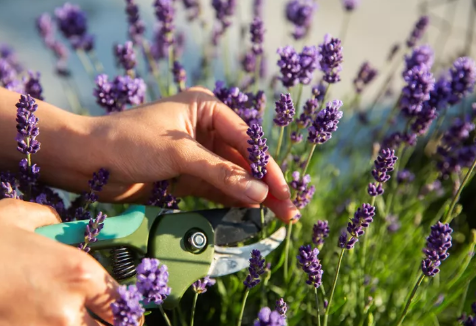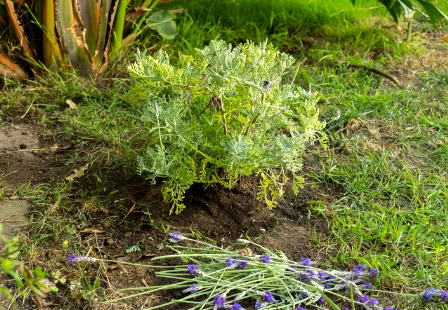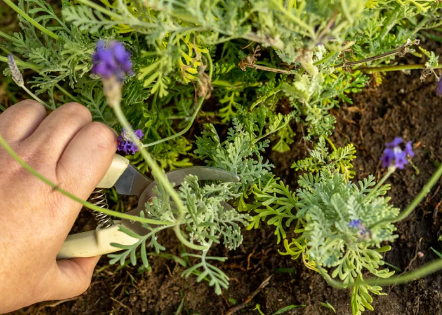Not only does lavender have a pleasant aroma, but it’s also one of the longest-flowering perennials you can grow in a vanilla garden. While this hardy plant suitable for dry regions doesn’t require much maintenance, pruning lavender properly and at the right time is essential to keep your plants healthy.
Read on to learn how to trim lavender and the best time to do so.

Why Prune Lavender
If not pruned, the lavender plant will turn woody. In the depths of the semi-shrub, lavender plants are trying to turn woody. One purpose of pruning lavender is to slow this transition for the following reasons:
- Lavender wood is very fragile and prone to cracking due to snow, ice, and decay.
- Wood can form corners, which trap moisture, causing the wood to rot in the summer and crack in the winter (because the moisture inside freezes).
- Unlike many real shrubs and trees, the shoots that grow on lavender usually do not regenerate. Old branches will stop growing new branches, or they will grow spaced branches.
- Dense plants or woody overgrown plants are particularly susceptible to snow loads, which can cause plants to deform or break.
- Lavender has a shallow root system, which means that the roots are more susceptible to rot and premature death due to excess moisture. Regular pruning promotes root growth, especially during the winter months (after pruning in late summer), when plants store energy in their roots. A strong root system is essential for lavender to grow over the years.
When to Prune Lavender
The best time to prune lavender is in spring and after flowering. Additional pruning at other times of the year is optional to pinch off newly developed shoots; Cut the stems short by about a third after flowering is over; If the stems are already old and lignified, remove the complete stems late in the season.
The most important time to prune lavender is after flowering, but this plant is very adaptable. All lavender flowers with the stems that grow that year. This means that pruning in early or mid-spring will not sacrifice the year’s flowers.

There are a few other things to keep in mind when pruning lavender:
- If your lavender shows signs of damage in late winter, cut off any broken or cracked stems before spring growth begins and cover any exposed roots with soil.
- Spring pruning may delay flowering (which may be your preference), and it’s a good time to remove dead parts and shorten bud growth times.
- Pruning before the first frost in late summer or early fall can promote air circulation and prevent rot. So if you have the time, pruning twice a year can be helpful for your plants.
It is not necessary to cut off the remnants of individual florets on the lavender plant – cutting off the entire stem is a more efficient practice.
How to Prune Lavender Gradually
Prune Young Lavender Plants
Pruning begins when the lavender plant is still very young. The first step is to pinch off the newly grown branches. Seedlings grow dense shoots, which helps to form a good shape and grow many flowers when ripe. Waiting until the second year after planting to prune will cause the plant to grow woody parts that don’t shape well.

Pruning Established Lavender Plants
Prune mature lavender abundantly, cutting off at least one-third of all stems after the plant has finished flowering (exact timing depends on the lavender variety and local climate). Lavender thrives every year in full sunshine, so take this opportunity to transform your plant into lavender’s signature green mound.
Tip: You can use manual pruning shears or pruning shears. Scissors are not as precise as manual pruning shears, but they can save time and can be essential when creating or maintaining lavender fences. When pruning the woody stems of lavender, keep the bypass pruning shears clean and sharp. Using a blunt blade can cause abrasions or damage: you need to trim as cleanly as possible.

Pruning Lavender That Is Woody
Continue to prune old trees extensively, but don’t cut down the trunks that don’t have leaves. Cutting off old trunks will not bring plants back to life, but try pruning branches above the trunk to bring them back to life. A good rule of thumb is to count to the third node above the woody part (a raised branch from where the leaves grow) and prune above it. If you’re lucky, all three nodes, as well as some hidden nodes buried in the trunk, will wake up and grow for you.

Tip: Pruning any plant is somewhat traumatic, so try not to prune when it’s too hot. Watering the lavender after pruning will help the plant recover and be ready to start growing new branches.